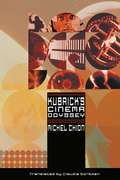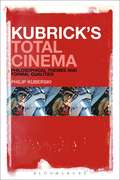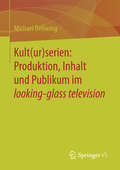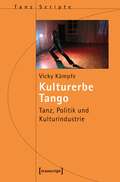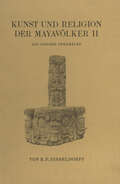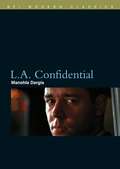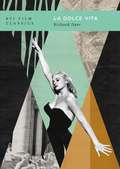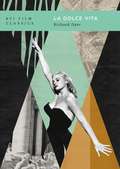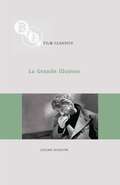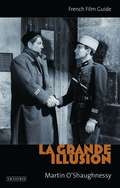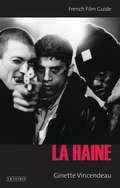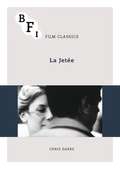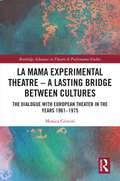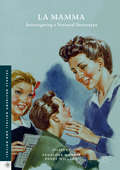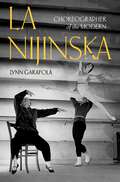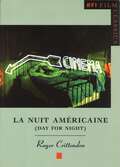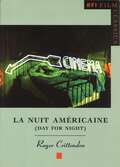- Table View
- List View
Kubrick's Cinema Odyssey
by Michel ChionAuthor wrote bestselling bfi Publishing title David Lynch 'a joy to the reader of film criticism' Choice; 2001: A Space Odyssey to be re-released in cinemas in The Spring and highly likely to be the focus of much media attention in the new year; Stanley Kubrick's 2001: A Space Odyssey (1968), based on Arthur C Clarke's novel, is one of the most ambitious films ever made, an epic of space exploration that takes in the whole history of humanity (as well as speculation about its future). A technical triumph that stands up today 2001 is topical also because of its meditation on the relationship between man, animal and machine. Haunting and enigmatic, it's a film that contains myriad images that seem to defy any explanation. In this multilayered study, acclaimed critic and theorist of film sound Michel Chion offers some keys to understanding 2001. Setting the film first in its historical and cultural contexts (the Space Race, the Cold War, 1960s psychedelia), Chion goes on to locate it within Kubrick's career. He then conducts a meticulous and subtle analysis of its structure and style, arguing that 2001 is an 'absolute film', a unique assemblage of cinema's elements, through which pulses a vision of human existence. 'Animals who know they will die, beings lost on earth, forever caught between two species, not animal enough, not cerebral enough.' In a supplementary chapter Chion argues that Kubrick's last film, Eyes Wide Shut (1999), is a return to 2001, a final statement of its concerns. And in a series of appendices Chion provides production details, an analytic synopsis, credits and a consideration of the legacy of 2001.
Kubrick's Total Cinema: Philosophical Themes and Formal Qualities
by Philip KuberskiWhatever people think about Kubrick's work, most would agree that there is something distinctive, even unique, about the films he made: a coolness, an intellectual clarity, a critical edginess, and finally an intractable ambiguity. In an attempt to isolate the Kubrick difference, this book treats Kubrick's films to a conceptual and formal analysis rather than a biographical and chronological survey. As Kubrick's cinema moves between the possibilities of human transcendence dramatized in 2001: A Space Odyssey and the dismal limitations of human nature exhibited in A Clockwork Orange, the filmmaker's style "de-realizes" cinematic realism while, paradoxically, achieving an unprecedented frankness of vision and documentary and technical richness. The result is a kind of vertigo: the audience is made aware of both the de-realized and the realized nature of cinema. As opposed to the usual studies providing a summary and commentary of individual films, this will be the first to provide an analysis of the "elements" of Kubrick's total cinema.
Kubrick's Total Cinema: Philosophical Themes and Formal Qualities
by Philip KuberskiWhatever people think about Kubrick's work, most would agree that there is something distinctive, even unique, about the films he made: a coolness, an intellectual clarity, a critical edginess, and finally an intractable ambiguity. In an attempt to isolate the Kubrick difference, this book treats Kubrick's films to a conceptual and formal analysis rather than a biographical and chronological survey. As Kubrick's cinema moves between the possibilities of human transcendence dramatized in 2001: A Space Odyssey and the dismal limitations of human nature exhibited in A Clockwork Orange, the filmmaker's style "de-realizes" cinematic realism while, paradoxically, achieving an unprecedented frankness of vision and documentary and technical richness. The result is a kind of vertigo: the audience is made aware of both the de-realized and the realized nature of cinema. As opposed to the usual studies providing a summary and commentary of individual films, this will be the first to provide an analysis of the "elements" of Kubrick's total cinema.
Kult(ur)serien: Produktion, Inhalt und Publikum im looking-glass television
by Michael DellwingDie Serie ist mittlerweile zum zentralen Element der Gegenwartskultur geworden. Damit hat sie dem Fernsehen, das einst belächeltes und herabgewertetes Medium war, kulturelle Bedeutung und im „Quality TV“ eine Rolle als künstlerische Leistung verschafft.Der vorliegende Band steht auf der Basis dieser Entwicklung. Er möchte nachzeichnen, in welchem Netz von Akteuren und deren aufeinander bezogenen Erwartungen die US-Serie und ihre künstlerische Anerkennung aufkommen. Dabei rückt er die Prozesse in den Vordergrund, in denen die Produktion unterstellen muss, was wirtschaftliche Abnehmer, Regulierungsbehörden und Publikum wahrscheinlich tun werden und zeigt auf, wie diese Akteure die Produktion in unterschiedlichen wirtschaftlichen Kontexten beurteilen und beeinflussen. Anhand zeitgenössischer Kult(ur)serien wird so die Entwicklung nachgezeichnet, die letztendlich zur modernen Form des seriellen Erzählens geführt hat.An die Stelle von Inhaltsanalysen, wie sie in der Fernsehforschung vermehrt aufgekommen sind, und Rezeptionsstudien, die die Erforschung von Medieninhalten zunehmend in den Raum des aufeinander bezogenen Handelns von Interpretationsgemeinschaften überführt haben, tritt hier eine Erforschung des „looking-glass-Fernsehens“, die zum Verständnis der Strukturen beitragen möchte, in denen modernes Serienfernsehen gemacht wird.
Kulturerbe Tango: Tanz, Politik und Kulturindustrie (TanzScripte #50)
by Vicky KämpfeDer Tango ist seit dem Jahr 2009 als immaterielles Kulturerbe anerkannt. Wurde er mit dieser normierenden Institutionalisierung zu einem Spielball zwischen der Vision der Bewahrung kultureller Werte, politischen Strategien und ökonomischen Interessen? Vicky Kämpfe legt anhand Bourdieu'scher Analyseansätze für Tanzpraktiken den Fokus auf inkorporierte Wissensbestände, den Wandel von kulturellen Praktiken und den Wert des Immateriellen. Sie zeigt Anknüpfungspunkte für Bewegungswissen und Archiv-Konzepte auf, um so die praktische Bedeutung des immateriellen Erbes insbesondere dort zu verankern, wo es entsteht und gelebt wird.
Kunst auf Sendung: Zur Analyse und Vermittlung von Radiokunst (Schriftenreihe für Künstlerpublikationen #9)
by Sarah SchönewaldWie lässt sich Radiokunst in ihren vielfältigen Formen wissenschaftlich analysieren? Welche spezifischen ästhetischen Dimensionen können radiophone Arbeiten entfalten? Was muss die Kunstvermittlung leisten, um diesen Eigenheiten Rechnung zu tragen? Und wie lässt sich die Vermittlung von Radiokunst in ihrer Wirkung evaluieren? Ausgehend vom Projekt »Schlafradio« von Norbert Math und der Arbeit »Nacht. Stimme. Zerstreuung.« von der Künstlergruppe LIGNA schafft Sarah Schönewald die bislang fehlenden Grundlagen für eine methodisch gesicherte und theoretisch reflektierte Analyse und Vermittlung von Radiokunst im Kontext der musealen Ausstellung.
Kunst und Religion der Mayavölker II: Die Copaner Denkmäler
by E. P. DieseldorfDieser Buchtitel ist Teil des Digitalisierungsprojekts Springer Book Archives mit Publikationen, die seit den Anfängen des Verlags von 1842 erschienen sind. Der Verlag stellt mit diesem Archiv Quellen für die historische wie auch die disziplingeschichtliche Forschung zur Verfügung, die jeweils im historischen Kontext betrachtet werden müssen. Dieser Titel erschien in der Zeit vor 1945 und wird daher in seiner zeittypischen politisch-ideologischen Ausrichtung vom Verlag nicht beworben.
Künstlerische Verfahren des Films aus psychologischer Sicht: Zum Wirkungspotenzial des Spielfilms (Film, Fernsehen, Medienkultur)
by Peter WussGestaltungsweisen des Spielfilms werden danach befragt, welche ästhetische Funktion ihnen im Erlebensprozess des Zuschauers zukommen mag und wie man diese aus der Perspektive der Psychologie objektivierbar machen kann.Künstlerische Verfahren mit ihren differenzierten gestalterischen Lösungen im Bereich des Erzählens, der Konfliktdarstellung, Kameraführung und Montage, doch auch im Hinblick auf Medienspezifik, Stil und Genre, erfahren hierbei eine psychologische Interpretation, was zu Hypothesen hinführt, die eine empirische Erforschung der kognitiven, emotiven und imaginativen Wirkungsdimension des Films gestatten. Da bei dieser transdisziplinären Untersuchung, die sich explizit dem künstlerischen Ausdruckspotenzial des Mediums stellt, stets von einer Betrachtung konkreter Werke ausgegangen wird, ergeben sich für den Filminteressierten neben psychologisch fundierten Erklärungen zur Funktion bewährter Darstellungsweisen zahlreiche Einblicke in die Wirkungsstrategien innovativer Ausdrucksformen, die sich bisher der Analyse entzogen. Besonders gilt dies für künstlerische Verfahren, die seit Anbruch der Kino-Moderne vom europäischen Autorenfilm zur Anwendung gebracht werden und wichtige Erlebnisgehalte unterhalb der Bewusstheitsschwelle vermitteln bzw. Emotionen und Vorstellungen des Publikums auf neuartige Weise beeinflussen.
L.A. Confidential (BFI Film Classics)
by Manohla DargisL.A. Confidential was released in 1997 to huge critical acclaim and it went on to be nominated for nine Academy Awards. Its reputation has since grown to the point that the film is now widely seen as a key Hollywood movie of the 1990s. But it fared poorly at the box-office, having neither big-name stars nor the sop of a comforting moral universe. With characters so bad they were irresistible, the film harked back to an older, darker Hollywood at a time when audiences would soon be flocking to 'Titanic'. Directed by Curtis Hanson from the best-selling novel by James Ellroy, 'L.A. Confidential' stars Kim Basinger alongside Kevin Spacey, Danny DeVito and, to the surprise of many industry watchers, two then relative unknowns, New Zealander Russell Crowe and Australian Guy Pearce. The film is a consummate thriller which takes in - without once losing sight of the human cost - police corruption, organized crime, the sleaze press, high-class prostitution, murder and the ways movies and life twist together. Manohla Dargis explores the careers of Hanson and Ellroy, based on interviews with both men, to dig deep into the film's obsession with the twinned, equally troubled histories of the Hollywood studio system and the city of Los Angeles. She untangles the paradox of 'L.A. Confidential', a film that paints a jet black, melancholy picture of a city and an industry even as it also testifies to - and exemplifies beautifully - their seductive glamour.
L.A. Confidential (BFI Film Classics)
by Manohla DargisL.A. Confidential was released in 1997 to huge critical acclaim and it went on to be nominated for nine Academy Awards. Its reputation has since grown to the point that the film is now widely seen as a key Hollywood movie of the 1990s. But it fared poorly at the box-office, having neither big-name stars nor the sop of a comforting moral universe. With characters so bad they were irresistible, the film harked back to an older, darker Hollywood at a time when audiences would soon be flocking to 'Titanic'. Directed by Curtis Hanson from the best-selling novel by James Ellroy, 'L.A. Confidential' stars Kim Basinger alongside Kevin Spacey, Danny DeVito and, to the surprise of many industry watchers, two then relative unknowns, New Zealander Russell Crowe and Australian Guy Pearce. The film is a consummate thriller which takes in - without once losing sight of the human cost - police corruption, organized crime, the sleaze press, high-class prostitution, murder and the ways movies and life twist together. Manohla Dargis explores the careers of Hanson and Ellroy, based on interviews with both men, to dig deep into the film's obsession with the twinned, equally troubled histories of the Hollywood studio system and the city of Los Angeles. She untangles the paradox of 'L.A. Confidential', a film that paints a jet black, melancholy picture of a city and an industry even as it also testifies to - and exemplifies beautifully - their seductive glamour.
La dolce vita (BFI Film Classics)
by Richard DyerFellini's La dolce vita has been a phenomenon since before it was made, a scandal in the making and on release in 1960 and a reference point ever since. Much of what made it notorious was its incorporation of real people, events and lifestyles, making it a documentation of its time. It uses performance, camera movement, editing and music to produce a striking aesthetic mix of energy and listlessness, of exuberance and despair. Richard Dyer's study considers each of these aspects of the film – phenomenon, document, aesthetic – and argues that they are connected. Beginning with the inspirations and ideas that were subsequently turned into La dolce vita, Dyer then explores the making of the film, the film itself and finally its critical reception, providing engaging new insights into this mesmerising piece of cinema.
La dolce vita (BFI Film Classics)
by Richard DyerFellini's La dolce vita has been a phenomenon since before it was made, a scandal in the making and on release in 1960 and a reference point ever since. Much of what made it notorious was its incorporation of real people, events and lifestyles, making it a documentation of its time. It uses performance, camera movement, editing and music to produce a striking aesthetic mix of energy and listlessness, of exuberance and despair. Richard Dyer's study considers each of these aspects of the film – phenomenon, document, aesthetic – and argues that they are connected. Beginning with the inspirations and ideas that were subsequently turned into La dolce vita, Dyer then explores the making of the film, the film itself and finally its critical reception, providing engaging new insights into this mesmerising piece of cinema.
La Grande Illusion (BFI Film Classics)
by Julian JacksonJean Renoir's 1937 film La Grande Illusion is set during the First World War, but its themes of Franco-German conflict, divided loyalties in a time of war and the rise of anti-Semitism made it compelling and controversial viewing. Julian Jackson traces the film's historical context and its reception history.
La Grande Illusion: French Film Guide (Ciné-File French Film Guides)
by Martin O'ShaughnessyDirected by the great Jean Renoir, 'La Grande Illusion' (1937) is the finest of all anti-war films and a cinematic masterwork. Other films oppose war by showing its horror. Renoir's film holds the horror at arm's length to give us a clearer view of it. A prisoner-of-war drama, with brilliant performances from leading stars of its period, including Erich von Stroheim and Jean Gabin, the film combines popular appeal with a formal brilliance that allows a complex examination of how classes, nations and genders relate to one another. In this comprehensive and readable companion to the film, Martin O'Shaughnessy underlines its sharp intelligence. He shows how, not content to register the world as it is, the film plays off competing historical possibilities against each other, facing the public with their responsibility to shape the future. Locating the film in the context of Renoir's career, O'Shaughnessy discusses its use of stars, production history, set design and reception. He compares known drafts of the film with a previously undiscovered story outline, casting important new light on its genesis. Stressing how it spoke to its times, he also demonstrates how it speaks to us now.'Ginette Vincendeau has assembled an elite corps of film scholars to address a marvellous array of modern and classic French films with the close-up scrutiny they deserve.' - Dudley Andrew
La Haine: French Film Guide (Ciné-File French Film Guides)
by Ginette VincendeauReleased in 1995, La Haine is the black and white chronicle of 24 hours in the life of a mixed-race young male trio from a run-down Parisian suburb. The work of a then unknown young team (director and actors were all under 30), it became hugely and unexpectedly successful, launchingdirector Mathieu Kassovitz and lead player Vincent Cassel to stardom.The film's combination of hard-hitting social exposé, stylish black and white cinematography and hip-hop culture also turned it into an enduring cult movie with younger viewers. With great style and insight, Ginette Vincendeau provides a thorough understanding of the context of the film's making, its narrative tension, stylistic sophistication and ideological ambiguity and of its extraordinary success nationally and internationally. She thus explains why, out of so many films about disaffected youth, La Haine is the one that caught the imagination, becoming an instant classic.
La Jetée (BFI Film Classics)
by Chris DarkeChris Marker's La Jetée is 28 minutes long and almost entirely made up of black-and-white still images. Since its release in 1964, the film – which Marker described as a 'photo-novel' – has haunted generations of viewers and inspired writers, artists and film-makers. Its spiralling narrative of post-nuclear war time-travel narrative has influenced many other films, including the Terminator series and Terry Gilliam's Hollywood 'remake' Twelve Monkeys (1995).But as Marker rarely gave interviews, little is really known about the origins of La Jetée or the ideas behind it. In this groundbreaking study, Chris Darke draws on rare archival material, including previously unpublished correspondence and production documents, to examine the making of the film. He explores how Marker's only fiction film was influenced both by his early work as a writer and by Alfred Hitchcock's Vertigo (1958), and considers how La Jetée's imagery can be seen to 'echo' throughout Marker's extraordinarily diverse oeuvre.
La La Land (Oxford Guides to Film Musicals)
by Hannah LewisIn this Oxford Guide to Film Musicals, author Hannah Lewis gives readers fascinating new insights into the development, style, and reception of the 2016 film musical La La Land. Directed by Damien Chazelle with music by Justin Hurwitz, the film tells the story of a romance between an aspiring actress and jazz pianist as the two pursue their dreams in Los Angeles. It uses a vintage form to tell a modern story and its blend of nostalgia and realism made it an instant classic even as it prompted a range of critical and audience responses. Drawing on extensive personal interviews with director Damien Chazelle, composer Justin Hurwitz, choreographer Mandy Moore, and lyricists Benj Pasek and Justin Paul, the book explores La La Land's aesthetic approach to the film musical genre, particularly its engagement with and subversion of the classic Hollywood musical's stylistic and narrative expectations. Lewis offers readers ways of listening to the film's depiction of jazz, focusing especially on how race and genre intersect in its narrative. She also reveals new insights into the film's reception, showing how the critical response from its premiere to its place at the Academy Awards reflected broader cultural expectations and understandings of the film musical and its continued appeal for twenty-first century audiences. By exploring the range of stylistic and cultural debates that La La Land prompted, this book gives readers new ways of thinking about the film musical genre's enduring and evolving place in contemporary American culture.
La La Land (Oxford Guides to Film Musicals)
by Hannah LewisIn this Oxford Guide to Film Musicals, author Hannah Lewis gives readers fascinating new insights into the development, style, and reception of the 2016 film musical La La Land. Directed by Damien Chazelle with music by Justin Hurwitz, the film tells the story of a romance between an aspiring actress and jazz pianist as the two pursue their dreams in Los Angeles. It uses a vintage form to tell a modern story and its blend of nostalgia and realism made it an instant classic even as it prompted a range of critical and audience responses. Drawing on extensive personal interviews with director Damien Chazelle, composer Justin Hurwitz, choreographer Mandy Moore, and lyricists Benj Pasek and Justin Paul, the book explores La La Land's aesthetic approach to the film musical genre, particularly its engagement with and subversion of the classic Hollywood musical's stylistic and narrative expectations. Lewis offers readers ways of listening to the film's depiction of jazz, focusing especially on how race and genre intersect in its narrative. She also reveals new insights into the film's reception, showing how the critical response from its premiere to its place at the Academy Awards reflected broader cultural expectations and understandings of the film musical and its continued appeal for twenty-first century audiences. By exploring the range of stylistic and cultural debates that La La Land prompted, this book gives readers new ways of thinking about the film musical genre's enduring and evolving place in contemporary American culture.
La MaMa Experimental Theatre – A Lasting Bridge Between Cultures: The Dialogue with European Theater in the Years 1961–1975 (Routledge Advances in Theatre & Performance Studies)
by Monica CristiniThis book focuses on the role of La MaMa Experimental Theatre within Avant-garde theater during the 1960s and 1970s. This study investigates the involvement of the Off-Off Broadway circuit in the Avant-garde experimentations both in the United States (New York specifically) and in Europe. This exploration shows the two-way influence – between Europe and the United States – testified by documents gathered in years of archival research. In this relevant artistic exchange, La MaMa (and Ellen Stewart as its founder and artistic director) emerges as a key element. La MaMa’s companies brought to Europe the American culture and the New York underground culture, while their members learnt European training techniques by attending workshops or taking part in the research of Eugenio Barba, Jerzy Grotowski, and Peter Brook, and brought their principles back to the United States. This book goes through a chronological path that presents some key cases of collaboration between the above-mentioned European masters and some La MaMa’s artists and companies: Tom O ’Horgan and La MaMa Repertory Troupe, the Open Theatre, Andrei Serban and The Great Jones Repertory Company, La MaMa Plexus. This book will be of great interest to students and scholars in theater and performance studies.
La MaMa Experimental Theatre – A Lasting Bridge Between Cultures: The Dialogue with European Theater in the Years 1961–1975 (Routledge Advances in Theatre & Performance Studies)
by Monica CristiniThis book focuses on the role of La MaMa Experimental Theatre within Avant-garde theater during the 1960s and 1970s. This study investigates the involvement of the Off-Off Broadway circuit in the Avant-garde experimentations both in the United States (New York specifically) and in Europe. This exploration shows the two-way influence – between Europe and the United States – testified by documents gathered in years of archival research. In this relevant artistic exchange, La MaMa (and Ellen Stewart as its founder and artistic director) emerges as a key element. La MaMa’s companies brought to Europe the American culture and the New York underground culture, while their members learnt European training techniques by attending workshops or taking part in the research of Eugenio Barba, Jerzy Grotowski, and Peter Brook, and brought their principles back to the United States. This book goes through a chronological path that presents some key cases of collaboration between the above-mentioned European masters and some La MaMa’s artists and companies: Tom O ’Horgan and La MaMa Repertory Troupe, the Open Theatre, Andrei Serban and The Great Jones Repertory Company, La MaMa Plexus. This book will be of great interest to students and scholars in theater and performance studies.
La Mamma: Interrogating a National Stereotype (Italian and Italian American Studies)
by Penelope Morris Perry WillsonThe idea of the “mamma italiana” is one of the most widespread and recognizable stereotypes in perceptions of Italian national character both within and beyond Italy. This figure makes frequent appearances in jokes and other forms of popular culture, but it has also been seen as shaping the lived experience of modern-day Italians of both sexes, as well as influencing perceptions of Italy in the wider world. This interdisciplinary collection examines the invented tradition of mammismo but also contextualizes it by discussing other, often contrasting, ways in which the role of mothers, and the mother-son relationship, have been understood and represented in culture and society over the last century and a half, both in Italy and in its diaspora.
La Nijinska: Choreographer of the Modern
by Lynn GarafolaLa Nijinska is the first biography of twentieth-century ballet's premier female choreographer. Overshadowed in life and legend by her brother Vaslav Nijinsky, Bronislava Nijinska had a far longer and more productive career. An architect of twentieth-century neoclassicism, she experienced the transformative power of the Russian Revolution and created her greatest work - Les Noces - under the influence of its avant-garde. Many of her ballets rested on the probing of gender boundaries, a mistrust of conventional gender roles, and the heightening of the ballerina's technical and artistic prowess. A prominent member of Russia Abroad, she worked with leading figures of twentieth-century art, music, and ballet, including Stravinsky, Diaghilev, Poulenc, Alexandra Exter, Natalia Goncharova, Frederick Ashton, Alicia Markova, and Maria Tallchief. She was also a remarkable dancer in her own right with a bravura technique and powerful stage presence that enabled her to perform an unusually broad repertory. Finally, she was the author of an acclaimed volume of memoirs in addition to a major treatise on movement. Nijinska's career sheds new light on the modern history of ballet and of modernism more generally, recuperating the memory of lost works and forgotten artists, many of them women. But it also reveals the sexism pervasive in the upper echelons of the early and mid-twentieth-century ballet world, barriers that women choreographers still confront.
La Nijinska: Choreographer of the Modern
by Lynn GarafolaLa Nijinska is the first biography of twentieth-century ballet's premier female choreographer. Overshadowed in life and legend by her brother Vaslav Nijinsky, Bronislava Nijinska had a far longer and more productive career. An architect of twentieth-century neoclassicism, she experienced the transformative power of the Russian Revolution and created her greatest work - Les Noces - under the influence of its avant-garde. Many of her ballets rested on the probing of gender boundaries, a mistrust of conventional gender roles, and the heightening of the ballerina's technical and artistic prowess. A prominent member of Russia Abroad, she worked with leading figures of twentieth-century art, music, and ballet, including Stravinsky, Diaghilev, Poulenc, Alexandra Exter, Natalia Goncharova, Frederick Ashton, Alicia Markova, and Maria Tallchief. She was also a remarkable dancer in her own right with a bravura technique and powerful stage presence that enabled her to perform an unusually broad repertory. Finally, she was the author of an acclaimed volume of memoirs in addition to a major treatise on movement. Nijinska's career sheds new light on the modern history of ballet and of modernism more generally, recuperating the memory of lost works and forgotten artists, many of them women. But it also reveals the sexism pervasive in the upper echelons of the early and mid-twentieth-century ballet world, barriers that women choreographers still confront.
La Nuit Américaine (BFI Film Classics)
by Roger CrittendenThis intimate book draws extensively on research in the archives of Francois Truffaut's company, Les Films du Carrosse, and on interviews with many of La Nuit américaine cast and crew. They bear witness to Truffaut's passion for film.La Nuit américaine (Day for Night) is Truffaut's hymn of joy to the cinema, which charts the pleasures and pains enjoyed or endured by the cast and crew of a film as it is being shot in the Victorine Studios in Nice. It won the Oscar for Best Foreign Film in 1973.
La Nuit Américaine (BFI Film Classics)
by Roger CrittendenThis intimate book draws extensively on research in the archives of Francois Truffaut's company, Les Films du Carrosse, and on interviews with many of La Nuit américaine cast and crew. They bear witness to Truffaut's passion for film.La Nuit américaine (Day for Night) is Truffaut's hymn of joy to the cinema, which charts the pleasures and pains enjoyed or endured by the cast and crew of a film as it is being shot in the Victorine Studios in Nice. It won the Oscar for Best Foreign Film in 1973.
